Items
keywords is exactly
virus
-
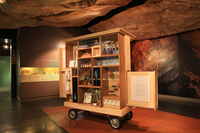
Chest: a botanical ecology
Illness and disease affect us all. The treatment of these conditions however, has been vast and varied, depending on the historical periods and the cultural context in and during which they are practiced. Situated in the rock art gallery, where healing power is expressed in San paintings, this mobile set of cabinets explores a rich complex of healing practices through the display of a medicine chest which was donated to the university of Cape Town in 1978. This chest belonged to a British dentist, who practiced in Cape Town from 1904, and who bought the chest for a hunting trip he undertook in 1913 to (then) Northern Rhodesia. The idea of the chest then gives rise to a variety of forms of healing: from instruments used to exorcise evil spirits and children's letters written to celebrate a heart transplant; to medicinal flowers bought at the Adderley Street flower market. The exhibition aims to visualise and materialise illness and its treatment from historical, cultural and disciplinary perspectives. Drawing on well-established historical and contemporary connections between the disciplines of Botany, Medicine and Pharmacology, the exhibits also suggest latent links which are at times political, at times whimsical. -
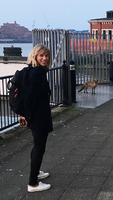
Nina Liebenberg
The researcher who conducted this study and wrote the dissertation, 'The Virus and the Vaccine: Curatorship and the Disciplinary Outsider '(2021). -

BC666
A page of the Tabloid guide. -

The virus (dormant)
"When it (the chest) is not being exhibited in the Iziko South African Museum, it lives in the archives of the University of Cape Town. As part of an institution that has sworn dedication to decolonising its curriculum, it poses a somewhat latent threat. In a speech in 2015, the writer and previous vice-chancellor of the University of Cape Town, Professor Njabulo Ndebele, stated "that there can be no transformation of the curriculum, or indeed of knowledge itself, without an interrogation of archive". It is an argument which strongly suggests that a critical assessment of the archival legacy on which the institution is founded becomes of pivotal importance when developing a decolonial institution. What worth then, if any, does this dormant object serve in a new curriculum?" Extract from a paper delivered at the BSHS conference in Cambridge, 2019 -

Wave
Screengrab of an image search, typing in 'third wave' -

Lacuna (Part one)
"It is interesting to note that the botanical origins of most of these medicines were from outside of Africa, especially if one considers the long history of the Cape as a point on the trade routes where ill sailors regularly disembarked and drew on the knowledge of the Khoekhoe traditional healers for treatment and herbal cures (Laidler & Gelfand 1971: 44). The Cape flora offered a plenitude of medicinal resources and these healers (who were skilled in botany, surgery and medicine) used them in a variety of healing practices . The exclusion of local botanical remedies in the BWC No. 254 medicine chest can be attributed to many factors" (Liebenberg 2021: 67). -
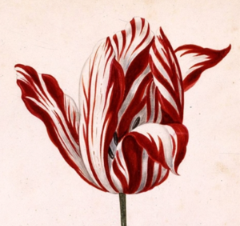
The broken tulip
"During the period known as tulipmania which transpired in the Netherlands during the 17th century, contract prices for bulbs of the recently introduced tulip reached extraordinarily high levels and then suddenly collapsed. Tulips that displayed a break in their colour reached prices far higher than those that didn’t. It wasn’t until 1920, after the invention of the electron microscope, that scientists discovered that the cause for this symphony of colour was a virus that spread from tulip to tulip by Myzus persicae, the peach potato aphid. Michael Pollan in The Botany of Desire, explains this phenomenon: “The colour of a tulip consists of two pigments working in concert — a base colour that is always yellow or white and a second, laid-on colour called an anthocyanin; the mix of these two hues determining the unitary colour we see. The virus works by partially and irregularly suppressing the anthocyanin, thereby allowing a portion of the underlying colour to show through — creating the magic of the broken tulip. A fact that, as soon as it was discovered, doomed the beauty it had made possible" (Pollan 2003: 97 in Liebenberg 2011: 92). -

Semper Augustus Tulip
Photo of Semper Augustus watercolour, captured whilst perusing the Pera Museum, Istanbul, 2013 -

Tobacco Mosaic Virus
During the late 19th century, tobacco farmers observed a strange occurrence on the leaves of their tobacco plants. A mosaic pattern of light and dark green (or yellow and green, in some instances) appeared on the leaves of their crops, the presence of which signalled the steady decline in the plant’s growth. Because of the lucrative nature of the industry, finding a treatment for this seemingly infectious disease became a priority, with many laboratories working to isolate the cause. Bacteria were recognised as the causative agents of many infectious diseases of plants and animals, including humans, in the second half of the 19th century – and the technique of filtration was developed to separate infectious agents from extracts or exudates in order to study these microbes. It was whilst utilising this technique that Dmitri Ivanovski, a Russian microbiologist working in the Crimea in 1890, made a surprising discovery. Using the Chamberland–filter made from porcelain and designed to trap ordinary bacteria, Ivanovsky discovered that the filtered sap from the diseased plants could continue to transfer the infection to healthy plants – an occurrence he attributed to an agent which must be an exceedingly small parasitic microorganism, invisible even under great magnification. It would take another 45 years before the visualisation of this subcellular entity would be formulated with the help of an electron microscope, but Ivanovksy, along with the Dutch botanist M.W. Beijerinck, who also and independently, isolated these microbes in his laboratory in 1898, are generally credited for the discovery of viruses. The disease which infected the tobacco plants would be aptly called the Tobacco Mosaic Virus, and its identification would signal the initiation of a field of study known as virology. -
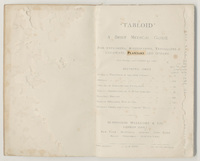
Philosophia Botanica
"'Tabloid' Medicine Chests and Cases and 'Tabloid' First Aid Outfits have become standard equipment for travellers. They have accompanied the pioneers of tropical exploration through the jungles of Equatorial Africa, Asia and South America, as well as travellers to the unknown parts of the temperate zones" (BWC 1934: 12). -

Holes
A virus attacks a cell by attaching itself to the outer wall. It then uses a specialized protein to digest a small hole in the wall of the cell and inject its nucleic acid molecule into the cell's cytoplasm. -

Wounds
A wounded bottle in Special Collections, BC666, UCT -

Holes
A page from the Tabloid guide, BC666, UCT -
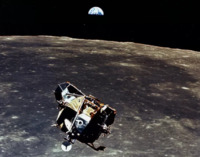
Moon landing
"FIZZY LIFTING DRINKS, it said on the next door. ‘Oh, those are fabulous!’ cried Mr Wonka. ‘They fill you with bubbles, and the bubbles are full of a special kind of gas, and this gas is so terrifically lifting that it lifts you right off the ground just like a balloon, and up you go until your head hits the ceiling – and there you stay.’ ‘But how do you come down again?’ asked little Charlie. ‘You do a burp, of course,’ said Mr Wonka. ‘You do a great big long rude burp, and up comes the gas and down comes you! But don’t drink it outdoors! There’s no knowing how high up you’ll be carried if you do that. I gave some to an old Oompa-Loompa once out in the backyard and he went up and up and disappeared out of sight! It was very sad. I never saw him again.’ ‘He should have burped,’ Charlie said. ‘Of course he should have burped,’ said Mr Wonka. ‘I stood there shouting, “Burp, you silly ass, burp, or you’ll never come down again!” But he didn’t or couldn’t or wouldn’t, I don’t know which. Maybe he was too polite. He must be on the moon by now’” (Dahl 1974: 95). -
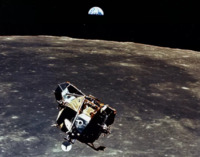
The Eagle has landed (Apollo 11 Lunar Module Ascent Stage Photographed from Command Module)
The Apollo 11 Lunar Module ascent stage, with Astronauts Neil A. Armstrong and Edwin E. Aldrin Jr. aboard, is photographed from the Command and Service Modules (CSM) during rendezvous in lunar orbit. The Lunar Module (LM) was making its docking approach to the CSM. Astronaut Michael Collins remained with the CSM in lunar orbit while the other two crewmen explored the lunar surface. The large, dark-colored area in the background is Smyth's Sea, centered at 85 degrees east longitude and 2 degrees south latitude on the lunar surface (nearside). This view looks west. The Earth rises above the lunar horizon. -
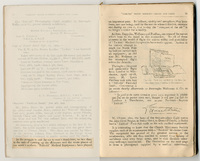
Experiments and Observations on Different Kinds of Air
"In the struggle to add the air to man's dominions, no less than in the task of opening up the unknown and the waste places of the earth's surface, 'Tabloid' medical equipment have played an important part. In balloon, airship and aeroplane, they have been, and are being, used by men whose initiative , resource and daring we owe it, that today the 'conquest of air' is no longer a vision but a reality" (BWC 1934: 12). -

Philosophia Botanica
"'Tabloid' Medicine Chests and Cases and 'Tabloid' First Aid Outfits have become standard equipment for travellers. They have accompanied the pioneers of tropical exploration through the jungles of Equatorial Africa, Asia and South America, as well as travellers to the unknown parts of the temperate zones" (BWC 1934: 12). -

Experiments and Observations on Different Kinds of Air
"In the struggle to add the air to man's dominions, no less than in the task of opening up the unknown and the waste places of the earth's surface, 'Tabloid' medical equipment have played an important part. In balloon, airship and aeroplane, they have been, and are being, used by men whose initiative , resource and daring we owe it, that today the 'conquest of air' is no longer a vision but a reality" (BWC 1934: 12). -
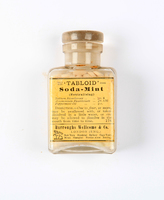
Soda-Mint (Neutralising)
"Antacid, exhilarant and stimulant. From one to three as a neutralising agent, in irritable and acid conditions of the stomach, dyspepsia, flatulence, etc. They may be swallowed with water, or be powdered and dissolved in water and taken as a draught" (BWC 1925:138). -
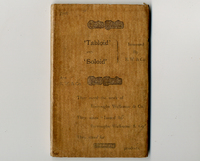
'Tabloid' A Brief Medical Guide (Back cover)
A guide to illnesses common to tropical regions and how to cure them using Burroughs Wellcome & Co.'s products -

'Tabloid' A Brief Medical Guide (End pages)
A guide to illnesses common to tropical regions and how to cure them using Burroughs Wellcome & Co.'s products -

'Tabloid' A Brief Medical Guide (p148)
A guide to illnesses common to tropical regions and how to cure them using Burroughs Wellcome & Co.'s products -

'Tabloid' A Brief Medical Guide (p146,147)
A guide to illnesses common to tropical regions and how to cure them using Burroughs Wellcome & Co.'s products -
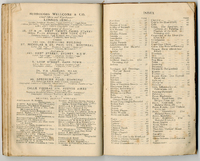
'Tabloid' A Brief Medical Guide (p144,145)
A guide to illnesses common to tropical regions and how to cure them using Burroughs Wellcome & Co.'s products -
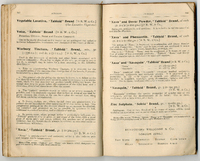
'Tabloid' A Brief Medical Guide (p142,143)
A guide to illnesses common to tropical regions and how to cure them using Burroughs Wellcome & Co.'s products -

'Tabloid' A Brief Medical Guide (p140,141)
A guide to illnesses common to tropical regions and how to cure them using Burroughs Wellcome & Co.'s products -

'Tabloid' A Brief Medical Guide (p138,139)
A guide to illnesses common to tropical regions and how to cure them using Burroughs Wellcome & Co.'s products -

'Tabloid' A Brief Medical Guide (p136,137)
A guide to illnesses common to tropical regions and how to cure them using Burroughs Wellcome & Co.'s products -

'Tabloid' A Brief Medical Guide (p134,135)
A guide to illnesses common to tropical regions and how to cure them using Burroughs Wellcome & Co.'s products -

'Tabloid' A Brief Medical Guide (p132,133)
A guide to illnesses common to tropical regions and how to cure them using Burroughs Wellcome & Co.'s products -

'Tabloid' A Brief Medical Guide (p130,131)
A guide to illnesses common to tropical regions and how to cure them using Burroughs Wellcome & Co.'s products -

'Tabloid' A Brief Medical Guide (p128,129)
A guide to illnesses common to tropical regions and how to cure them using Burroughs Wellcome & Co.'s products -

'Tabloid' A Brief Medical Guide (p126,127)
A guide to illnesses common to tropical regions and how to cure them using Burroughs Wellcome & Co.'s products -

'Tabloid' A Brief Medical Guide (p124,125)
A guide to illnesses common to tropical regions and how to cure them using Burroughs Wellcome & Co.'s products -

'Tabloid' A Brief Medical Guide (p122,123)
A guide to illnesses common to tropical regions and how to cure them using Burroughs Wellcome & Co.'s products -

'Tabloid' A Brief Medical Guide (p120,121)
A guide to illnesses common to tropical regions and how to cure them using Burroughs Wellcome & Co.'s products -

'Tabloid' A Brief Medical Guide (p118,119)
A guide to illnesses common to tropical regions and how to cure them using Burroughs Wellcome & Co.'s products -
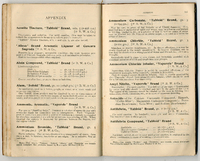
'Tabloid' A Brief Medical Guide (p116,117)
A guide to illnesses common to tropical regions and how to cure them using Burroughs Wellcome & Co.'s products -
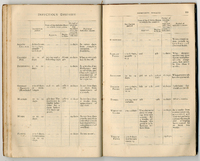
'Tabloid' A Brief Medical Guide (p114,115)
A guide to illnesses common to tropical regions and how to cure them using Burroughs Wellcome & Co.'s products -
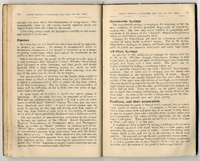
'Tabloid' A Brief Medical Guide (p112,113)
A guide to illnesses common to tropical regions and how to cure them using Burroughs Wellcome & Co.'s products -
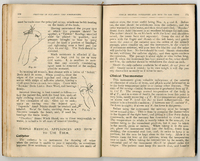
'Tabloid' A Brief Medical Guide (p110,111)
A guide to illnesses common to tropical regions and how to cure them using Burroughs Wellcome & Co.'s products -

'Tabloid' A Brief Medical Guide (p108,109)
A guide to illnesses common to tropical regions and how to cure them using Burroughs Wellcome & Co.'s products -
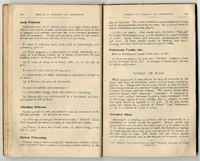
'Tabloid' A Brief Medical Guide (p106,107)
A guide to illnesses common to tropical regions and how to cure them using Burroughs Wellcome & Co.'s products -

'Tabloid' A Brief Medical Guide (p104,105)
A guide to illnesses common to tropical regions and how to cure them using Burroughs Wellcome & Co.'s products -

'Tabloid' A Brief Medical Guide (p102,103)
A guide to illnesses common to tropical regions and how to cure them using Burroughs Wellcome & Co.'s products -

'Tabloid' A Brief Medical Guide (p100,101)
A guide to illnesses common to tropical regions and how to cure them using Burroughs Wellcome & Co.'s products -

'Tabloid' A Brief Medical Guide (p98,99)
A guide to illnesses common to tropical regions and how to cure them using Burroughs Wellcome & Co.'s products -

'Tabloid' A Brief Medical Guide (p96,97)
A guide to illnesses common to tropical regions and how to cure them using Burroughs Wellcome & Co.'s products -

'Tabloid' A Brief Medical Guide (p94,95)
A guide to illnesses common to tropical regions and how to cure them using Burroughs Wellcome & Co.'s products -

'Tabloid' A Brief Medical Guide (p92,93)
A guide to illnesses common to tropical regions and how to cure them using Burroughs Wellcome & Co.'s products


